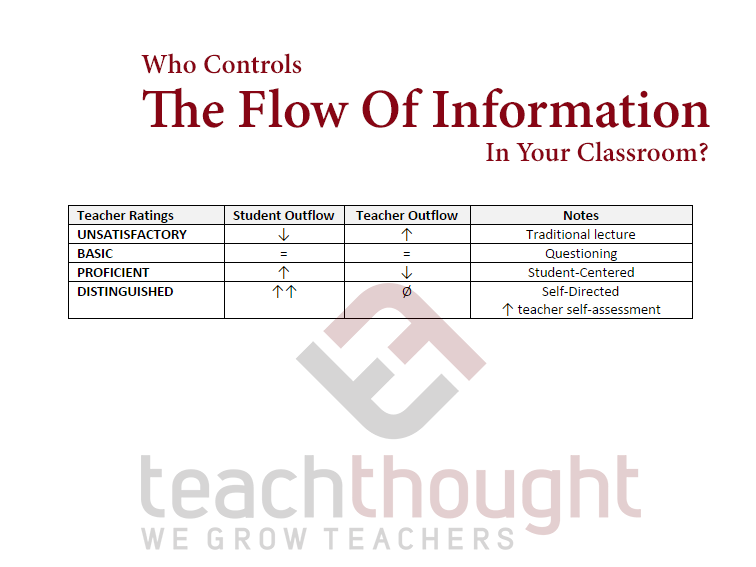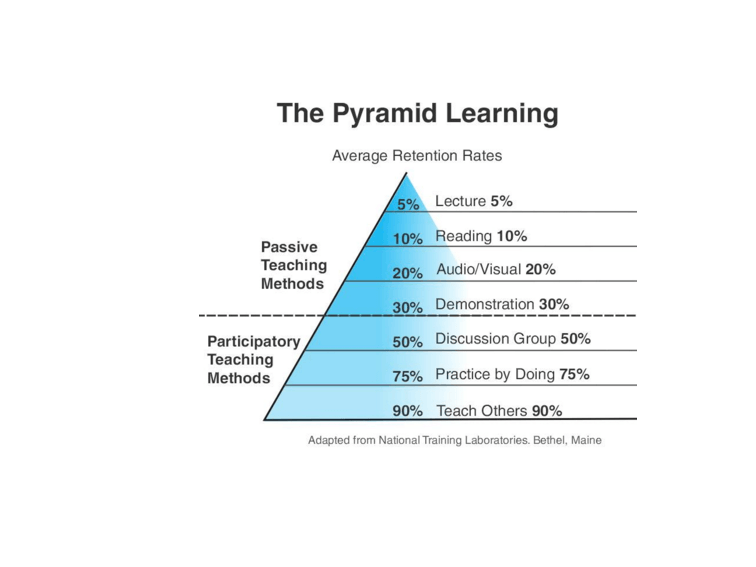
‘Information Flow’ As A Litmus Test For Quality Teaching
contributed by Lee Carroll, PhD
I’ve been thinking about Teacher Appraisals for years when finally it hit me like a flash—why can’t they be simpler?
What Are They Worth?
First, are teacher appraisals worth doing at all? It’s definitely an argument, considering that Finland has led the world in educational excellence for a handful of years and they don’t bother with appraising teachers. They simply hire the crème of the crop and let them do their job. But for those of us working within more conventional systems of schooling, we like to think that teacher appraisals can help pinpoint areas that need growth in a teacher’s skill-set.
Is There A Progressive Method Out There?
As Head of Department, I’ve been a champion of peer-appraisals for some time. In Colombia, I worked with a colleague studying for his principal certificate. To his credit, he made a form for us teachers to use to appraise one another. We would take the form to each other’s classes, visit for about 20 minutes or so and fill it out. The form was simple and positive. For the first question we jotted down some effective teaching techniques observed; and for the second, we noted suggestions for growth based on what’s worked in our own experience.
Although there are a few cutting-edge administrators out there, many hew to the top-down way of assessing teachers and never tried teacher-to-teacher. Peer-evaluations make a lot of sense since we know our role best.
My Discovery
Now I’ve discovered something even easier. And anyone can use it, administrator or peer, within 5 minutes.
This year we’ve agreed to use Charlotte Danielson’s state-of-the-art Framework for Teacher Appraisals. It’s good because it’s a thorough rubric and with so many pages of feedback, any teacher can easily select a category or two for growth.
Yet in conducting these rigorous reviews, I’ve noticed something. I can get a similar result simply by going into the classroom and observing only one trait! Hard to believe, right? I’d like to invite you to try it yourself and let me know if it works for you too. Then corroborate the validity of this easy method by checking against Danielson’s rubric.
The trait that tells it all for me is—FLOWS. Here’s my chart that breaks it down, and then I’ll explain:

What Is ‘Outflow’?
First let me define—outflow indicates the direction of communication. The person who is speaking, sharing, teaching, directing the action etc.
For instance, the old factory model of schooling where the teacher stuffs borrowed-knowledge into the kid’s head? All teacher outflow. Whereas student outflow involves students approaching other students to help them understand a concept, students running to each other for assistance as lab partners and students making decisions about their own learning.
When we examine Danielson’s Framework, we see many examples in the Distinguished column of students taking initiative. Initiative indicates ownership, and where students have ownership and responsibility for directing their own path… well, that’s self-directed learning. Isn’t that our goal in making lifelong learners? When you observe student-initiative in a classroom you can bet that teacher previously did a zillion things to set it up, all unseen to the casual observer.
How Did The Teacher Support Student-Initiative?
For example, providing a wealth of outside resources for the students takes tons of research-time and likely means the Distinguished Teacher maintains a website for them to refer to and contribute to. Probably a forum too, for students to have discussions. Also, in order to observe students taking initiative to arrange the classroom to meet their needs, the teacher must have encouraged them to feel safe and in charge. That can take weeks of encouragement, depending on their past experience.
I find it takes time to convince the students they are in a safe place to take intellectual and emotional risk because usually, they come to me in an inhibited state. It’s always a surprise for me to observe that the kids don’t believe it’s alright to ask their own questions. They have to be convinced I welcome their input, and will sincerely listen.
Just as with gardening, preparing the soil takes time. But once we get past that point, they begin to blossom and initiate their own learning path.
The Pyramid Of Learning
Research published by the National Training Laboratories of Bethel Maine clearly shows the effectiveness of peer-teaching amongst the students when compared to lecture methods. He who does the work does the learning, and a Distinguished Teacher will reflect this awareness in the classroom environment.

“I never teach my pupils.
I only attempt to provide the conditions in which they can learn.”
–Albert Einstein
